October 11, 2022. Today we dive deeper into the remote interior Galician mountainous area.
We arose from our surprisingly comfortable pilgrim accommodation in the remote and tiny hamlet of Villamartin Pequeño, where a three generation family business of pilgrim accommodations had arisen, and was most welcome as there was no other accommodation for miles. How did we get a whole apartment with kitchen, living room and dining room, Alice asked. I have no idea, but I’m glad you slept well after three nights of poor sleep.
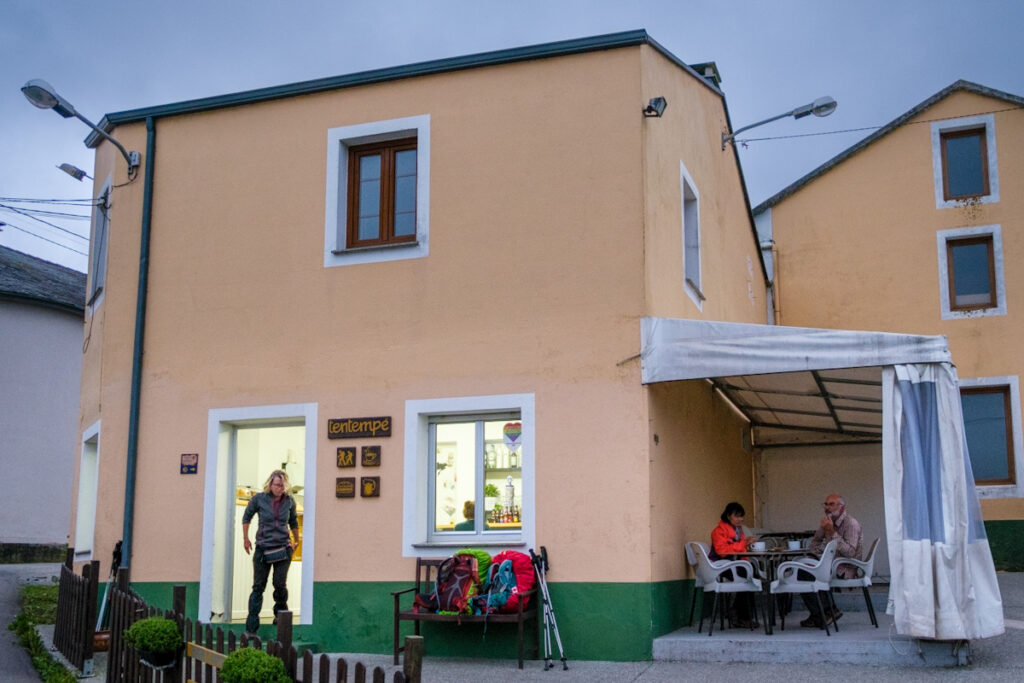
We headed off into the misty morning, surrounded by verdant hills and farms. The birds sang, the roosters crowed and the cowbells clanged. We felt like all we needed was mountains and a path before us and start walking for the day.
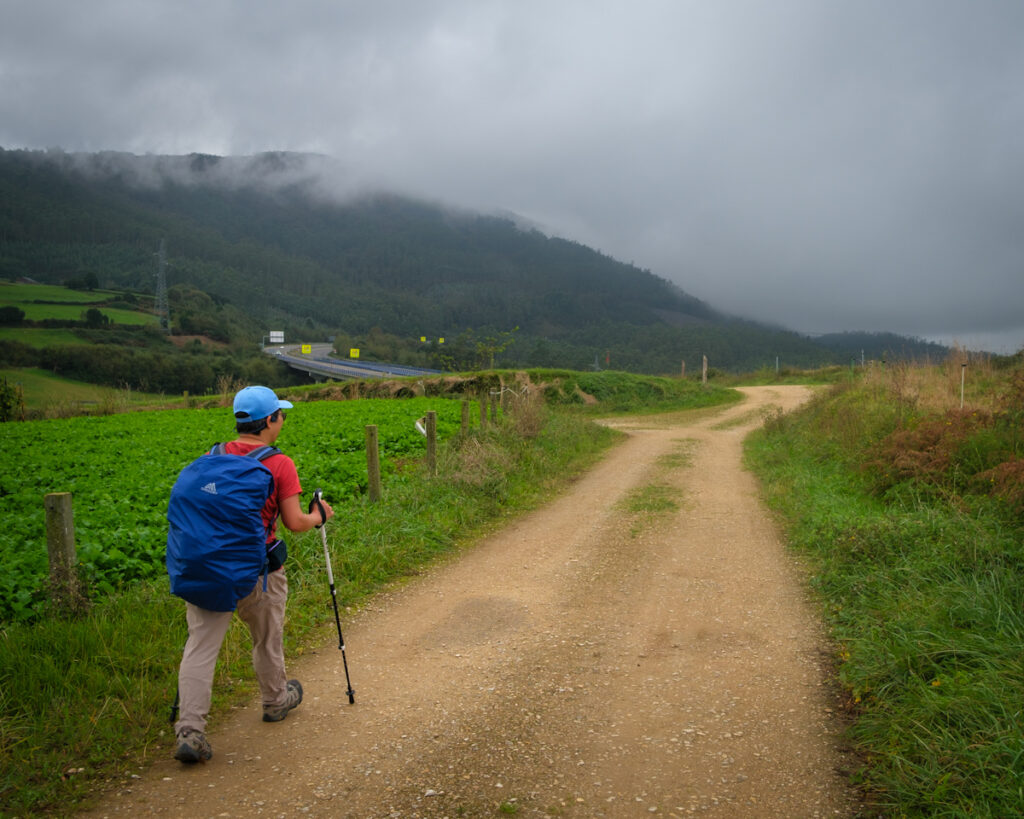
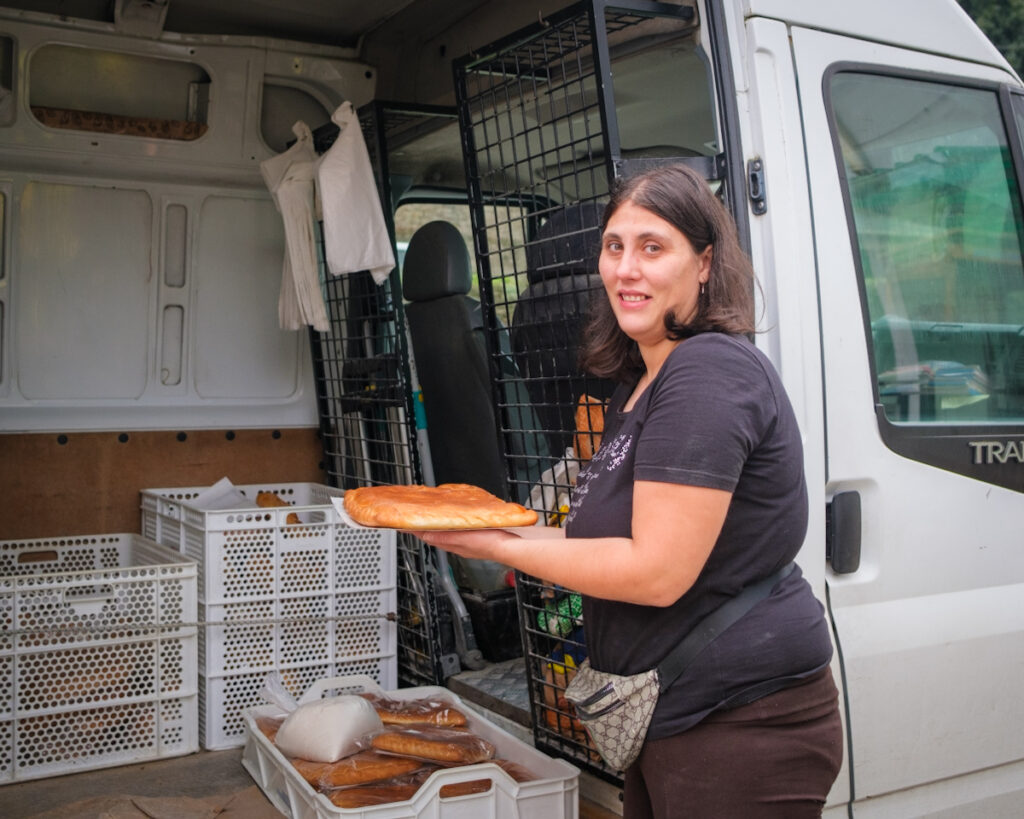
We had a shorter but fairly mountainous route today. We could afford to take our time, take rests, and enjoy the place we were walking through. Our feet were giving us some pain from yesterday from fairly aggressive walking without breaks. Today we would care for the feet and take breaks.
We walked through a number of hamlets, seeing no more than one or two persons, and being passed by a car or bus only once or twice. Within two hours we came to the only town of size, Villanova. Here we needed groceries, cash from an ATM, and to stop in a bar/restaurant for coffee and orange juice. By now , the dominant language was clearly Gallego, a close relative of Portuguese. I was surprised that Portuguese I had learned in a previous trip to Brazil started to come back. There are differences, but clearly a Portuguese and Gallego speaker can have a conversation with no problem.
I was relieved to have supplies on hand. A little light rain picked up and dissipated. We headed up into the mountain again, climbing 250 meters, but on well graded dirt and paved roads. It seems that the Galician caretakers of the Camino have a higher standard of path care and the walking is much easier, even with mountains. Every so often there is a modern looking stone tablet with a Camino symbol, arrow and detailed distance information, sown to the thousandths of km to Santiago. We are close to 150 km from Santiago now.
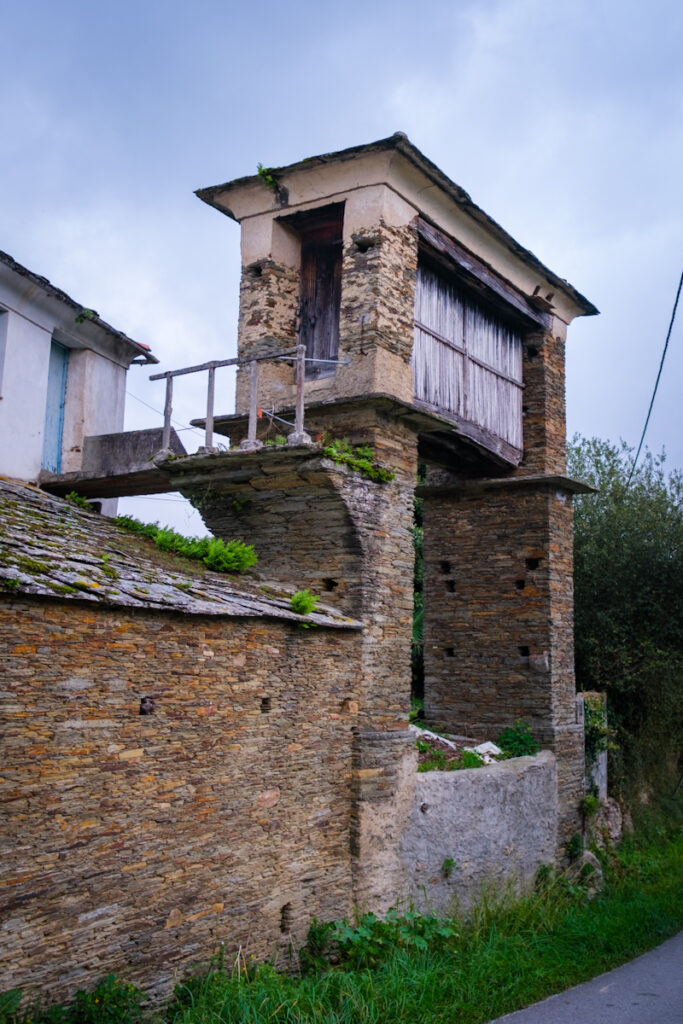

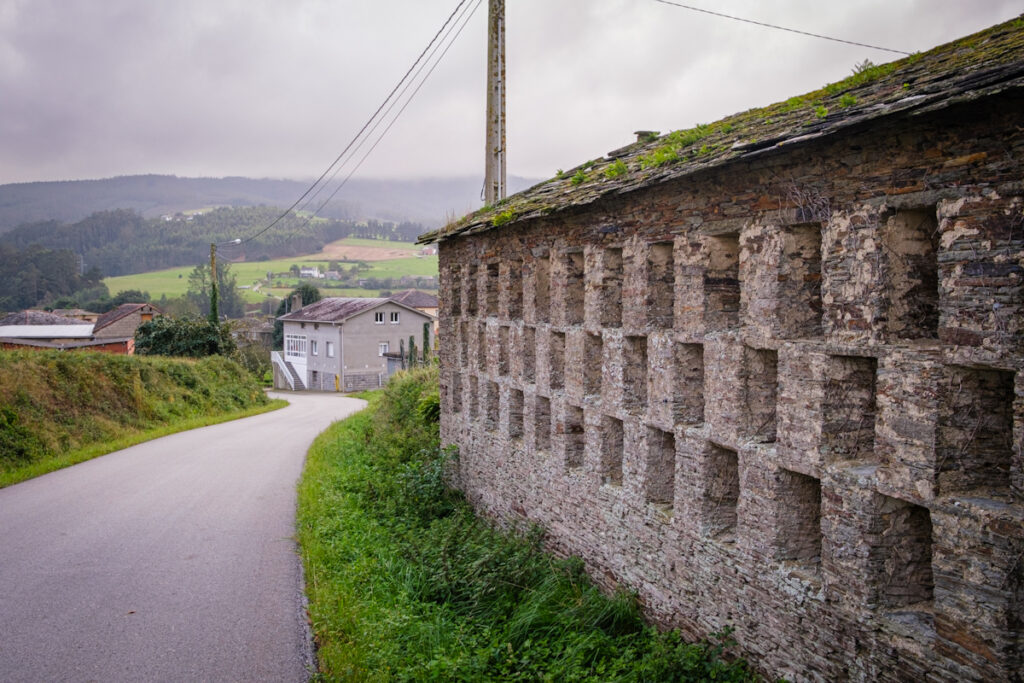
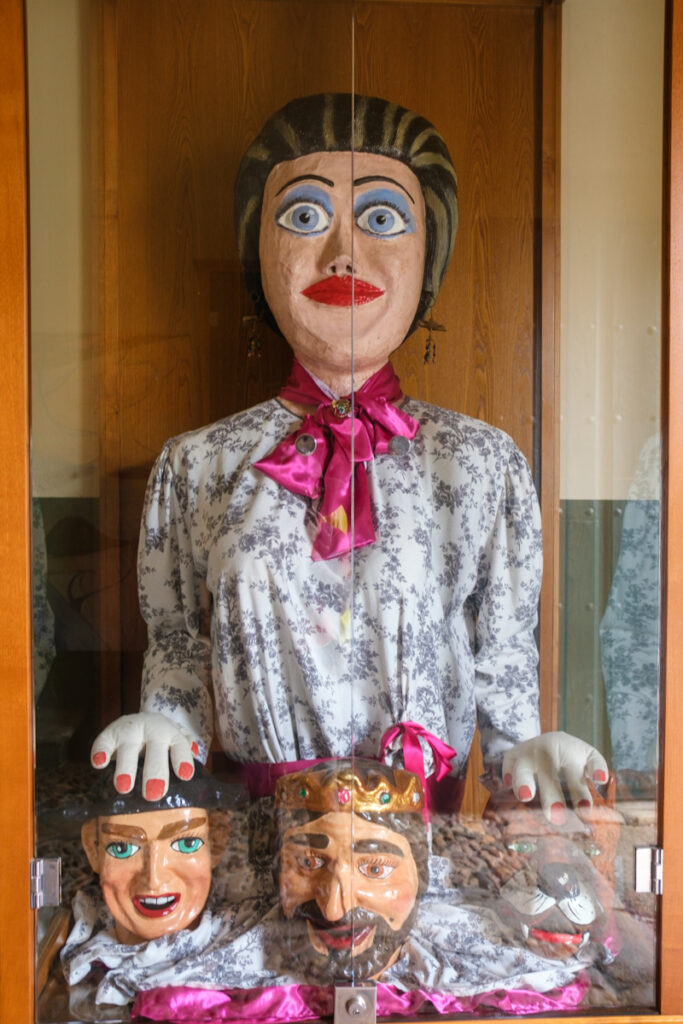
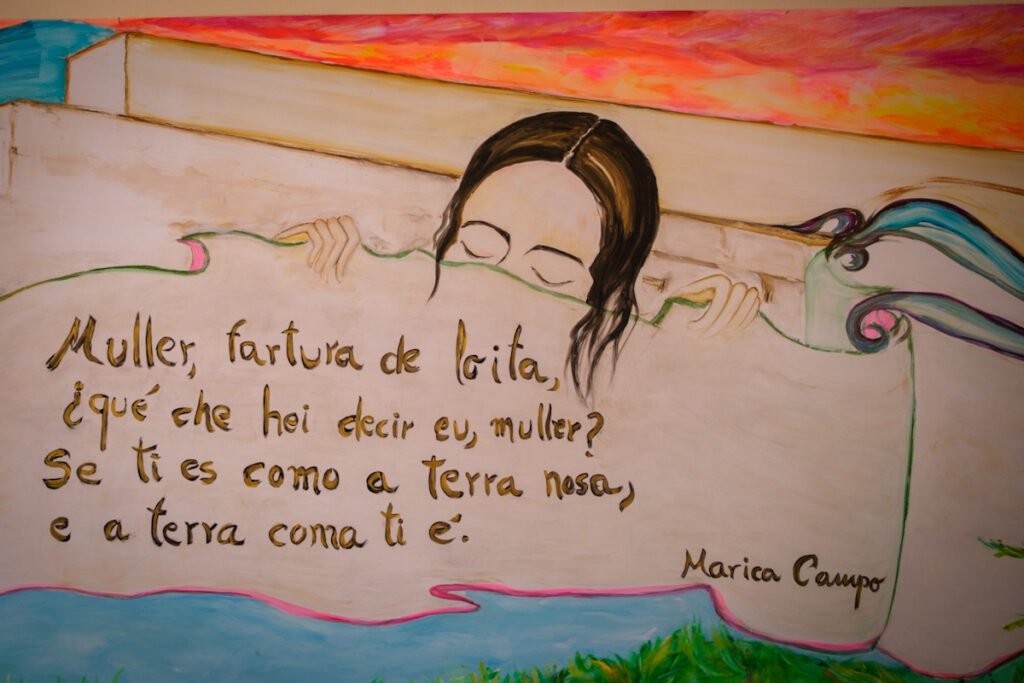
Leaving Vilanova, we headed back up into the mountain, through dense forest paths sometimes coming out onto a farm where hay was being gathered by hand.

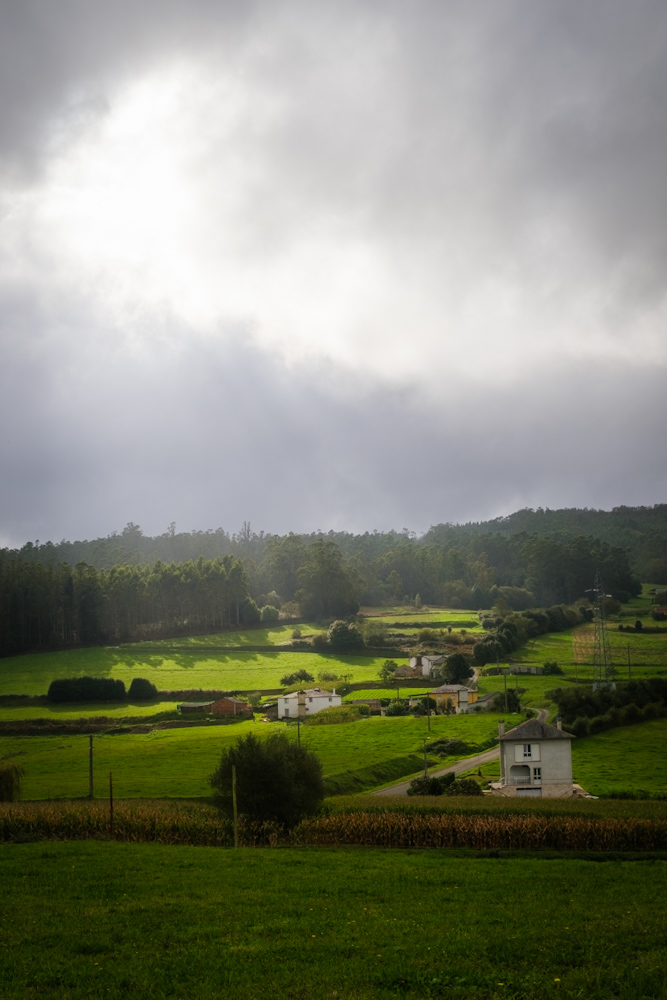
We came upon some old churches, one of which was open for repairs. The doors bore ancient symbols including those of fig leaves. I could not help but wonder if fig leaves figured in the local iconography long before Christianity, similar to the squash blossom seen on 16th C. churches in Mexico. That is, could the pre-Christian symbols persist without anyone realizing their connection to previous society?
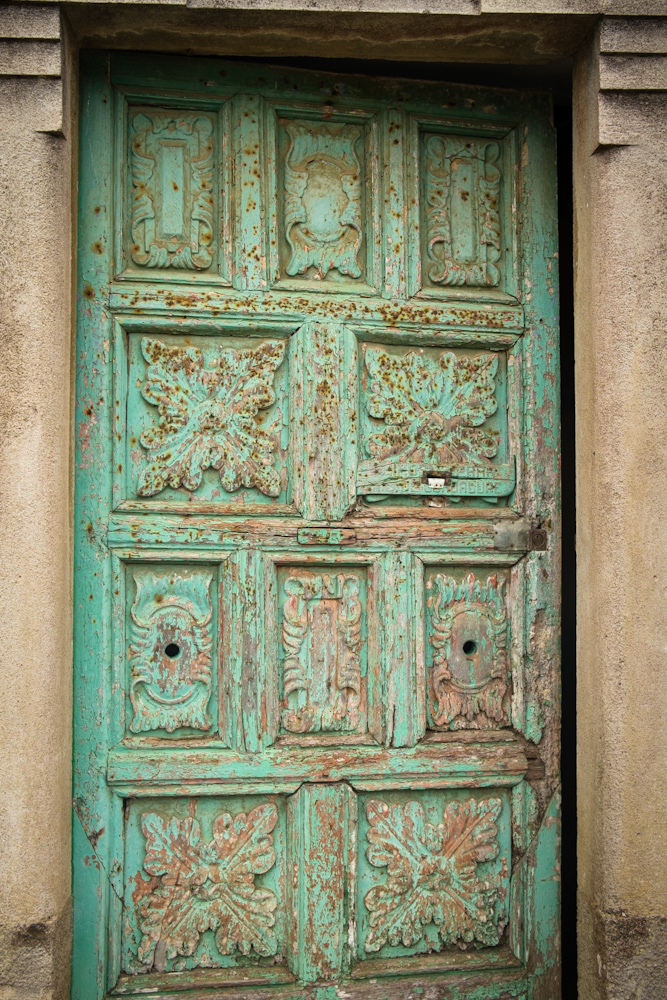
By 1:30, and after 18 km, we arrived in our destination town, Mondoñedo, which has exactly one hotel, exactly what we need. After a shower we still had time for a wonderful lunch of vegetable soup, Salade Niçoise, pork chop, flan and Rioja red wine. And now we have the rest of the day to rest and relax.
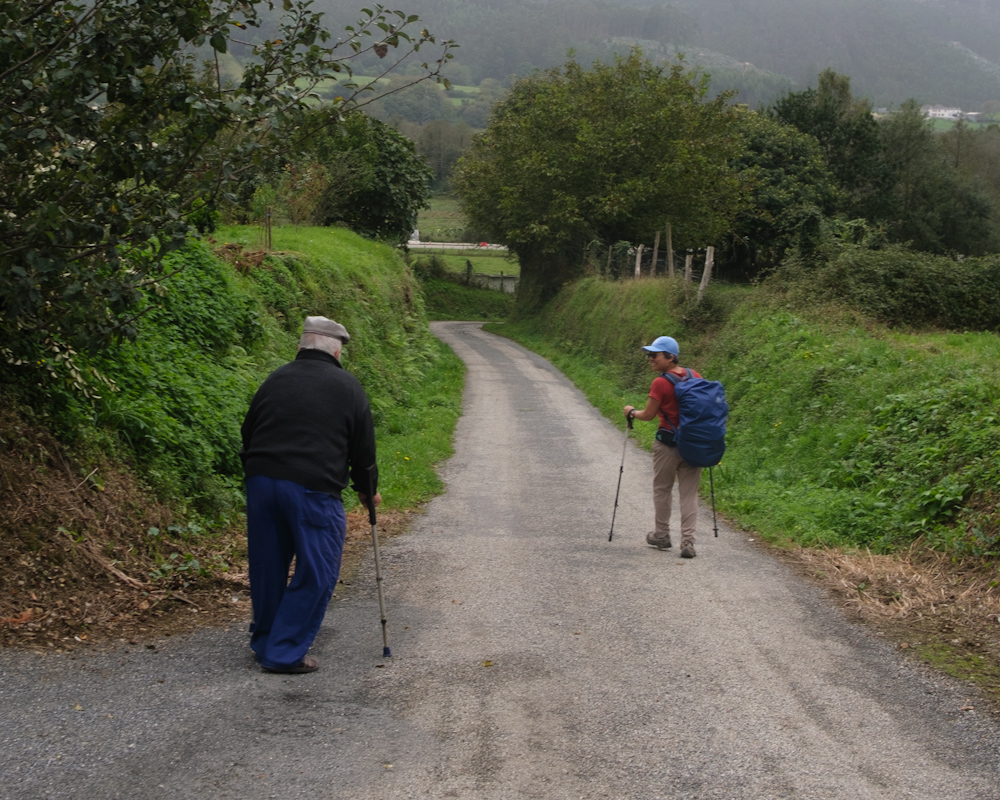

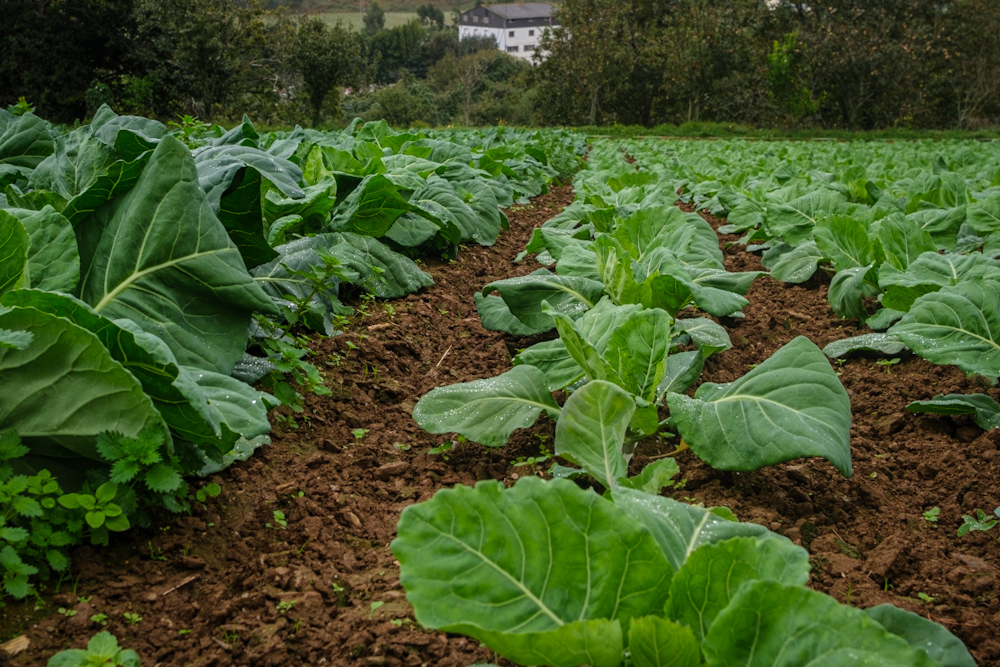

Love your cross-cultural and intercontinental comparisons – from language to art to granaries. I wonder if you’d care to reflect on the interior effects of this pilgrimage? I’m not talking intestinal or musculoskeletal but more psychological and/or spiritual.
I’m looking forward to reflection on this over a longer term, but so far there is a steadiness, a simplicity, an acceptance of what the world sends us each day, and perhaps a falling away of desires, expectations. More on that later.
A wonderful collection of photographs!
Thanks, much, Joe, and thanks for joining us!